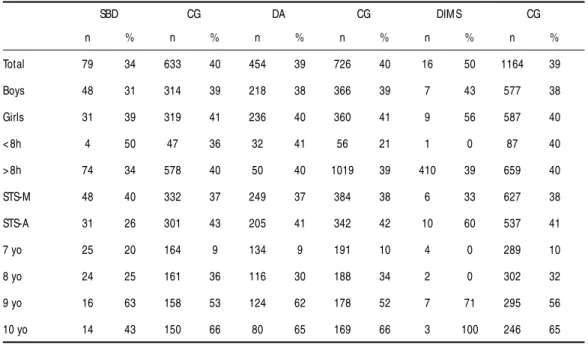Arq. NeuroPsiquiatr. vol.62 número2A
Texto
Imagem


Documentos relacionados
Sleep quality in this study was measured by the PSQI index and its components (subjective quality, latency, duration, habitual efficiency, sleep disorders, use of sleeping pills,
In general, all included studies investigated other sleep variables in addition to daytime sleepiness, such as: sleep duration, sleep quality, sleep hygiene or sleep disorders
Simple sleep related movement disorders of childhood including benign sleep myoclonus of infancy, rhythmic movement disorder, and childhood restless legs syndrome and periodic
In Psychiatry, sleep disorders are quite common and are used as diagnostic criteria for certain mental disorders in the diagnostic manuals, including depression, bipolar
Difficulty initiating sleep (OR=3.45), difficulty maintaining sleep (OR=7.61), falling asleep later (OR=1.99) and waking up earlier (OR=1.91) were associated with suspicion
Objective: To compare frequency of sleep disorders (SD) and executive dysfunction (ED) in children with attention deficit-hyperactivity disor- der (ADHD) and a control group..
Frequently used scales for assessment of sleep disorders include the Parkinson Disease Sleep Scale (PDSS) 4 , Parkinson Disease Sleep Scale -2 (PDSS-2) 5 , Scales for Outcomes
AHI : Apnea-hipopnea index; LRRK2-PD : LRRK2 Parkinson disease; Mentalis : polysomnographic montage quantifying "any" (phasic and tonic) type of EMG activity in the